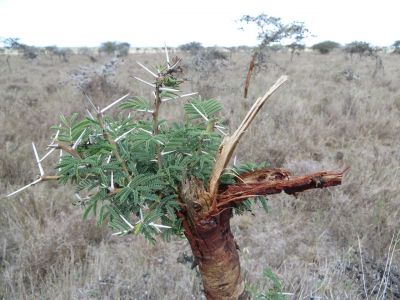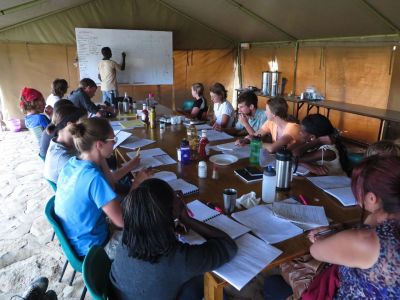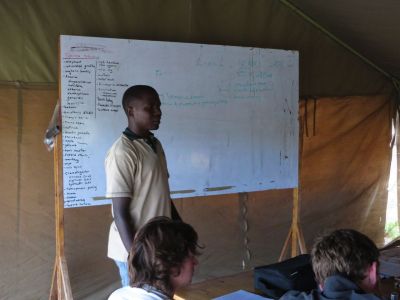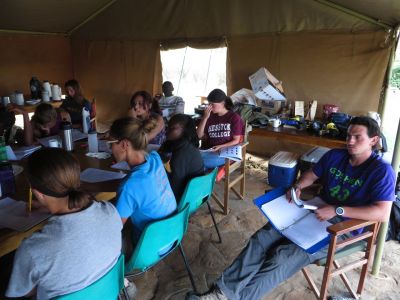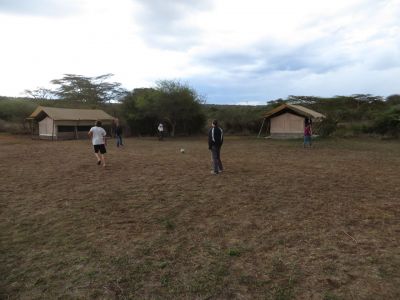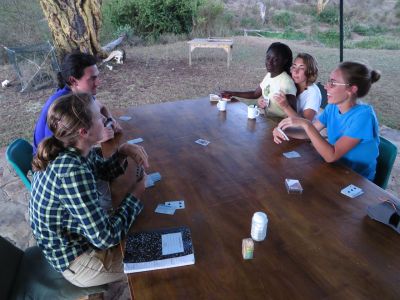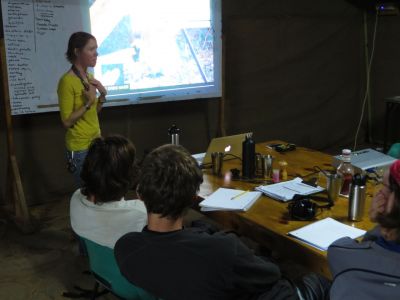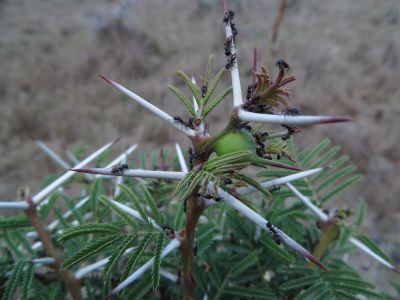
Friday May 9th, 2014 –
I wake up with my two tent mates at 6:30, first thing we do is open the tent flaps and let the dawn light pour in. Next is to make our beds- very tightly (we don’t want to find bugs in them tomorrow). After a quick breakfast, we go to the field to do research on the effects of smoke on ant behavior. Yes, this area has some pretty unique trees- called whistling thorns- with huge thorns (think toothpicks) to prevent being eaten by elephants. And as if that wasn’t enough, they grow ‘galls’ or hollow spheres (about 2 cm in diameter) which are occupied by defensive, biting ant species. These trees provide the ants with a home in the galls as well as food (nectar made to attract ants).
These ants spend their time in the tree, unless there is a fire, in which case they must evacuate. So, today we spent several hours trying to determine how far away these ants can detect smoke and move from the galls to the ground to save themselves. Together, the 18 students spanned nearly 2 km and recorded ant behavior on 36 trees. As far as 1800m away, when humans can’t even smell the smoke, the ants stream down the trunk- sometimes over a hundred per minute! This is amazing in its own right, but it also demonstrates that these native species have an evolved response to fire- suggesting that burning is a natural and healthy part of the landscape. This is be important, since these days it is difficult to convince pastoralists and ranch owners to use burning as a management tool.
The sun is bright and the days are hot, so we look forward to returning to camp to eat chapatis for lunch, and then sit in the shade to discuss cattle-wildlife interactions with our professor Duncan Kimuyu. Today is a special day because after dinner we receive a presentation from Laura Bidner, a postdoc researcher studying interactions between baboons, vervet monkeys, and leopards here at Mpala Research Center. After that, our first night game drive where we use several large spotlights to search for reflective eyes in the bush. We saw jackals, impala, Grants gazelle, dikdik, hare, and hyena! One of the hyena was actually within 15 m of our campsite boundary! (Yes, we have an electric fence, but it is only protective against hippo and elephants.)
But thanks to Jack and James our askari (night guards) we are safe from wild animals and hear stories in the morning of the hippo, lion, buffalo, and hyena they see and hear at night. Which animals will it be tonight? Maybe I will wake up and hear a few. But for now, I pay a quick visit to the bats in the bathroom before heading back to my tent and (hopefully) spiderless bed.
– Cecilia Lapp Stoltzfus, GC Interdisciplinary, 2017





